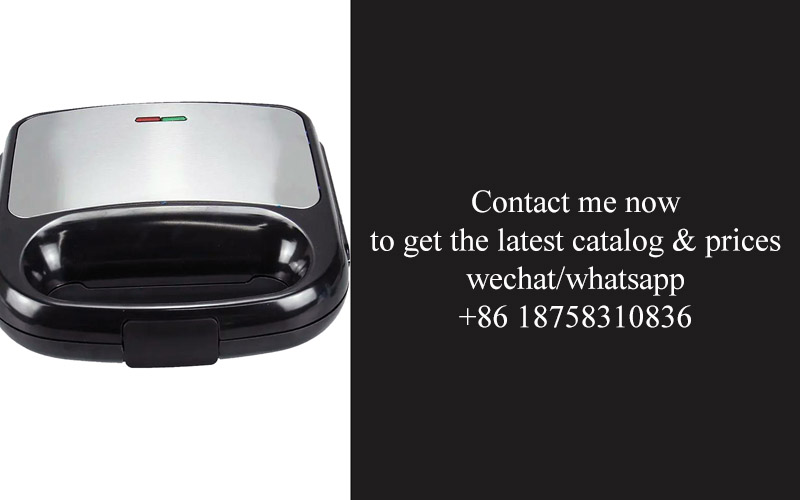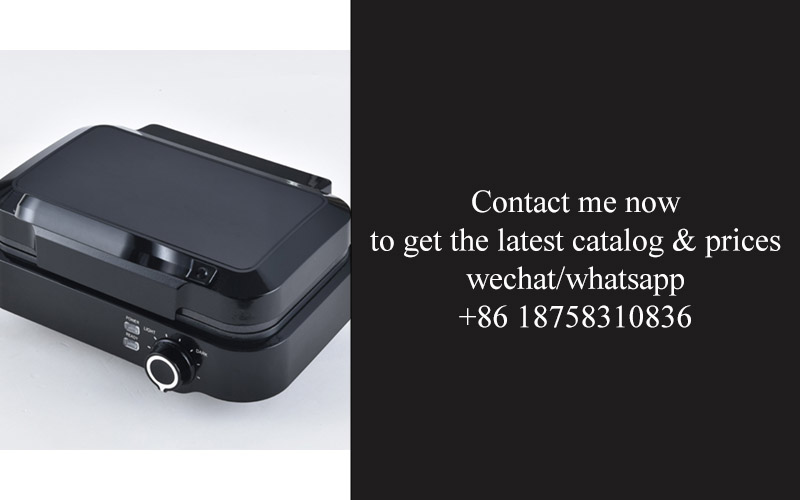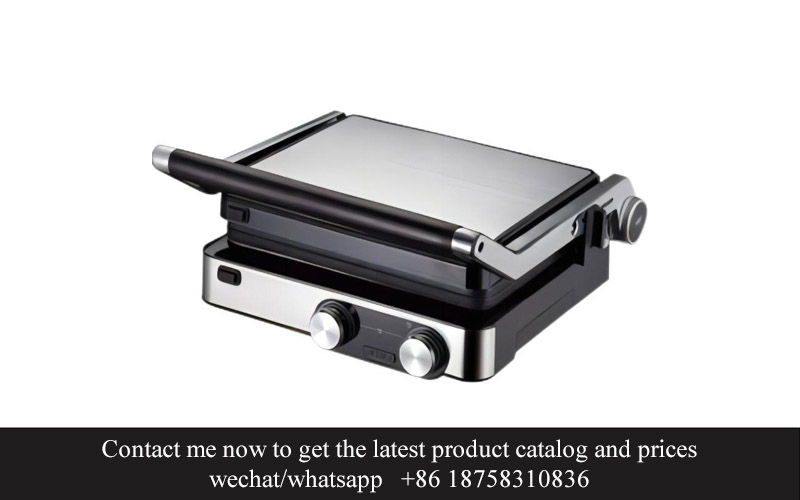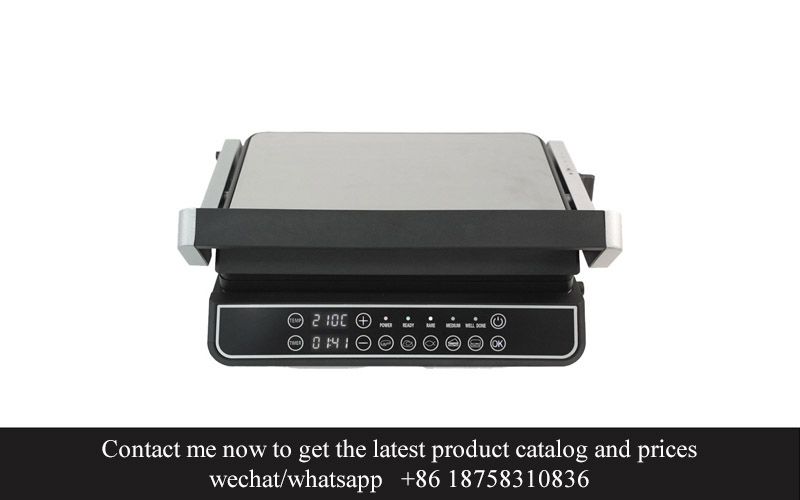Address
304 North Cardinal
St. Dorchester Center, MA 02124
Work Hours
Monday to Friday: 7AM - 7PM
Weekend: 10AM - 5PM
Address
304 North Cardinal
St. Dorchester Center, MA 02124
Work Hours
Monday to Friday: 7AM - 7PM
Weekend: 10AM - 5PM

In a world where innovation thrives and consumer preferences evolve rapidly, the landscape of product design is constantly shifting. At the heart of this dynamic field is the role of Original Design Manufacturers (ODM) in crafting cutting-edge solutions, particularly in the realm of juicers. This brief exploration delves into the transformative journey of juicer design, highlighting the importance of fresh ideas, market sensitivity, and the power of collaboration with ODM providers. It’s a story of how a simple kitchen appliance has been reimagined to cater to the demands of modern lifestyles.
The juicer, once a simple kitchen gadget, has undergone a remarkable transformation over the years. From the early days of hand-crank models to the sleek, high-tech appliances we see today, the evolution of juicers reflects the changing needs and tastes of consumers. Let’s take a quick look back at how this essential kitchen tool has developed.
Once upon a time, juicers were not the sleek, silent machines we know today. They were often large, clunky devices that required considerable effort to operate. The early models were primarily manual, relying on the physical exertion of the user to extract juice from fruits and vegetables. These hand-cranked juicers were not only labor-intensive but also quite inefficient, with much of the produce being wasted.
As time progressed, the advent of electricity brought about a revolution in juicing technology. Electric juicers began to emerge, offering a more convenient and less physically demanding alternative. These early electric models were often bulky and noisy, but they marked the beginning of a new era in juice-making.
The 1950s and 1960s saw a surge in juicer innovation, with manufacturers striving to make the juicing process easier and more efficient. This period saw the introduction of citrus juicers, which became popular for their ability to extract juice from oranges and other citrus fruits with minimal effort. These early citrus juicers were a precursor to the multi-function juicers we see today.
The 1970s and 1980s brought about further advancements in juicer technology. Masticating juicers, also known as slow juicers, were introduced, offering a different approach to juice extraction. These juicers crushed fruits and vegetables at a slower pace, resulting in a higher yield of juice and less pulp. The slow juicers also claimed to preserve more of the nutrients found in the produce, making them a favorite among health-conscious consumers.
As the 1990s rolled in, juicers continued to evolve. The introduction of centrifugal juicers, which spun produce at high speeds to separate juice from pulp, became widespread. These juicers were known for their speed and ease of use but were often criticized for the heat generated during the juicing process, which could potentially destroy nutrients.
The early 2000s saw a rise in the popularity of juicing as a health trend. This surge in interest led to a new wave of innovation in the juicer market. Masticating juicers gained even more popularity as they were hailed as the healthier option, preserving more nutrients and allowing for the juicing of leafy greens and wheatgrass. The introduction of cold-press juicers further expanded the options, as these machines crushed fruits and vegetables at low temperatures to minimize nutrient loss.
Today’s juicers are a testament to how far the technology has come. They range from compact, countertop models to portable, battery-operated devices. Many modern juicers come with a variety of features, such as adjustable speeds, pulp control, and even self-cleaning capabilities. The design of these appliances has become increasingly sleek and user-friendly, making juicing an even more appealing activity for the average consumer.
The evolution of juicers is not just about technological advancements; it’s also a reflection of changing dietary preferences and health consciousness. As consumers continue to seek out healthier lifestyles, the juicer has become an indispensable tool in the kitchen, offering a convenient way to incorporate fresh, nutrient-rich juices into daily meals.
In summary, the journey of the juicer from its humble beginnings to the sophisticated devices we have today is a story of innovation and adaptation. From manual to electric, simple to complex, juicers have come a long way, and the future promises even more exciting developments in this dynamic industry.

In the ever-evolving world of kitchen appliances, the juicer has undergone a remarkable transformation. Once a simple, often hand-cranked device, today’s juicers are sophisticated machines that cater to a wide range of needs and preferences. This evolution has been driven by advancements in technology, changing consumer habits, and the rise of health-conscious living.
The humble juicer has transformed from a basic kitchen gadget to a high-tech appliance, offering a variety of features that range from single-speed to multi-speed, and from centrifugal to masticating designs. These changes have not only improved the efficiency of juice extraction but have also expanded the types of produce that can be juiced, from fruits and vegetables to wheatgrass and nuts.
The concept of Original Design Manufacturing (ODM) has played a pivotal role in this evolution. ODM refers to a business model where a manufacturer produces goods that are branded and sold by another company, often with specific design requirements. In the context of juicers, ODM services allow brands to bring innovative and customized designs to market without the need for in-house design teams or extensive research and development.
One of the key benefits of ODM juicer design service is the ability to tailor products to meet the unique demands of different markets. For instance, certain regions may prefer juicers that are compact and portable, while others might prioritize high-capacity models for large families. By leveraging ODM, companies can quickly adapt their product lines to cater to these diverse needs.
Designing a juicer is not just about aesthetics; it’s a blend of functionality, user experience, and technological innovation. ODM providers often have a team of experts who understand the intricacies of juicer design, from the efficiency of the blade system to the ease of cleaning. They can incorporate the latest materials and technologies to ensure that the juicer is durable, quiet, and easy to use.
Customization is another hallmark of ODM juicer design service. Brands can request specific features, such as additional filters for pulp separation, built-in fruit crushers, or even Bluetooth connectivity for smart integration with kitchen appliances. This level of personalization ensures that the final product resonates with the target audience’s desires and expectations.
Moreover, ODM providers are well-versed in the regulatory requirements of various markets. They can ensure that the juicer complies with safety standards, certifications, and labeling regulations, which is crucial for global distribution. This compliance not only protects the end-user but also helps the brand avoid potential legal issues down the line.
In the realm of sustainability, ODM juicer design service has also become a focal point. As consumers become more environmentally conscious, there is a growing demand for products that are eco-friendly. ODM providers can incorporate sustainable materials and design practices that reduce the carbon footprint of the juicer, from the manufacturing process to the end of its life cycle.
The collaboration between brands and ODM providers also fosters a culture of continuous improvement. Regular feedback from consumers and market research data can be used to refine existing designs or develop entirely new ones. This iterative process ensures that juicers are not only stylish and efficient but also ahead of the curve in terms of technological advancements.
Furthermore, ODM services offer cost advantages. By outsourcing the design and manufacturing to specialized companies, brands can reduce their overhead costs and focus on other aspects of their business, such as marketing and distribution. This cost-effectiveness makes ODM an attractive option for startups and established companies alike.
In conclusion, the ODM juicer design service has become an integral part of the juicer industry. It allows brands to bring to market a wide array of innovative and customized juicers that cater to diverse consumer needs. With a focus on functionality, user experience, sustainability, and regulatory compliance, ODM providers are shaping the future of juicers, making them more efficient, user-friendly, and in tune with the values of modern consumers.

In the ever-evolving world of kitchen appliances, juicers have seen a remarkable transformation. From the simple citrus press of yesteryears to the high-tech, multi-functional machines of today, the design of juicers has been at the forefront of innovation. Let’s delve into some of the latest and most exciting advancements in juicer design.
Modern juicers are not just about extracting juice; they are designed to enhance the overall juicing experience. One such innovation is the use of advanced materials. High-quality stainless steel and BPA-free plastics have replaced traditional materials, ensuring that the juice is not only fresh but also safe to consume.
The design of juicers has also become more user-friendly. Modern models feature intuitive interfaces with digital displays that provide real-time feedback on the juicing process. These screens often include settings for different types of fruits and vegetables, making it easier for users to achieve the perfect juice consistency.
One of the standout innovations in juicer design is the inclusion of self-cleaning features. No one enjoys the cleanup process after juicing, so manufacturers have come up with clever solutions. Some juicers come with a built-in brush or a self-cleaning cycle that uses water and a specific blade to dislodge any remaining pulp from the juicer’s components.
Efficiency is another area where juicer design has made significant strides. High-speed juicers, for instance, can process fruits and vegetables at a rapid pace, which is particularly beneficial for those who are short on time. However, not all high-speed juicers are created equal. Some have been designed with a slower extraction speed to reduce heat buildup, which can degrade the nutritional value of the juice.
The blades inside juicers have also seen a revolution. High-quality, sharp blades are now the norm, ensuring that the produce is chopped into tiny pieces for maximum juice extraction. Some juicers even use twin gears or a masticating process that gently crushes fruits and vegetables, preserving more nutrients and vitamins than traditional centrifugal juicers.
In terms of design, juicers have become more stylish and compact. The sleek, modern aesthetics of today’s juicers make them not just functional but also a statement piece in the kitchen. Brands are now offering a variety of colors and finishes to match different kitchen decors.
Another innovation is the inclusion of additional functions. Many juicers now come with built-in blenders, food processors, or even pasta makers. This multipurpose approach allows users to create a variety of recipes with a single appliance, saving space and reducing the need for multiple kitchen gadgets.
Portability has also been a focus in juicer design. Some models are now lightweight and come with detachable parts, making them easy to store and transport. This is particularly appealing for those who enjoy juicing on the go or for those who have limited kitchen space.
Safety features have also been enhanced. Modern juicers often include safety locks to prevent operation when the lid is not properly sealed. Some models even have overload protection to prevent damage to the motor in case of overuse.
Lastly, the integration of smart technology has been a game-changer. Some juicers can now be controlled via smartphone apps, allowing users to monitor and adjust settings remotely. This connectivity not only adds convenience but also opens up possibilities for data collection and personalized juicing experiences.
In conclusion, the evolution of juicer design is a testament to the ingenuity of appliance manufacturers. From material advancements to user-friendly interfaces, and from multipurpose features to smart technology, the modern juicer is a marvel of innovation that continues to enhance the way we enjoy our morning juice.

In the fast-paced world of consumer goods, market sensitivity has become a crucial factor for businesses to thrive. Understanding the pulse of the market isn’t just about following trends; it’s about anticipating them, and in the realm of juicers, this has led to some remarkable innovations and design changes.
Consumer Behavior Insights: The evolution of juicers reflects a shift in consumer priorities. Once seen as a simple appliance, today’s juicers are expected to be versatile, health-conscious, and stylish. By analyzing consumer behavior, manufacturers can create products that not only fulfill a need but also resonate emotionally with the end-user.
Health and Wellness Trends: As health and wellness have surged in popularity, juicers have adapted to cater to these concerns. From low-speed masticating juicers that preserve nutrients to cold-press models that extract the maximum juice from fruits and vegetables, the market now offers a variety of options that cater to health enthusiasts.
Smart Technology Integration: The rise of smart devices has influenced juicer design. Modern juicers now come with features like touchscreens, Bluetooth connectivity, and app integration, allowing users to monitor their juice consumption and even control their juicer remotely.
Aesthetics and Design: Aesthetics play a significant role in market sensitivity. The juicer is no longer just a kitchen gadget; it’s a piece of home decor. Designers are now focusing on sleek lines, minimalist aesthetics, and color palettes that blend seamlessly into modern kitchen interiors.
Eco-Friendly and Sustainable Solutions: As environmental consciousness grows, consumers are increasingly looking for products that are sustainable. This has led to the development of juicers made from recyclable materials, and some brands are even designing juicers with parts that can be easily replaced or recycled.
Ease of Use and Maintenance: The convenience factor cannot be overstated. Users seek juicers that are easy to assemble, clean, and store. Features like self-cleaning functions, compact designs, and dishwasher-safe parts have become standard in the latest juicer models.
Culinary Versatility: Market sensitivity extends to the versatility of juicers. Modern juicers are not just for making fresh juice; they can also handle tasks like blending smoothies, pureeing baby food, and even grinding nuts. This adaptability meets the needs of consumers looking for a multifunctional kitchen appliance.
Cultural Diversity: Recognizing the diversity of cultures and preferences is key. Some markets prefer cold-pressed juicers, while others might favor the efficiency of centrifugal models. Understanding these cultural nuances helps in tailoring products to specific regions.
Economic Factors: The economic climate can greatly influence consumer behavior. During economic downturns, for instance, consumers might prioritize budget-friendly options, leading to the development of more affordable yet high-quality juicers.
Regulatory Compliance: Being market-sensitive also means staying abreast of regulations. New food safety standards and labeling requirements can affect product design and packaging, ensuring that juicers meet legal requirements while maintaining consumer trust.
Global Expansion: As companies look to expand into new markets, they must consider local preferences and cultural norms. This could mean modifying designs to accommodate different fruit and vegetable varieties or incorporating features that are unique to a particular region.
Brand Loyalty and Market Positioning: Finally, market sensitivity helps in building brand loyalty and positioning. By consistently delivering products that align with consumer expectations, brands can establish themselves as leaders in the juicer market.
In summary, market sensitivity is the heartbeat of innovation in juicer design. It’s about listening to the consumer’s voice, understanding their needs, and anticipating their desires. This approach ensures that juicers not only serve a functional purpose but also become a symbol of the evolving kitchen and the health-conscious lifestyle that comes with it.

In the ever-evolving world of product design, fresh ideas are the lifeblood of innovation. They breathe new life into industries, challenge the status quo, and often lead to groundbreaking advancements. The power of fresh ideas is undeniable, and its impact can be seen across various sectors, from technology to fashion, and even in the seemingly straightforward realm of kitchen appliances.
Imagine a world where every product was a carbon copy of its predecessor, lacking any spark of originality. Boring, isn’t it? Fresh ideas are what inject excitement and relevance into our daily lives. They push the boundaries of what’s possible, encouraging us to think outside the box and explore new possibilities.
Consider the smartphone industry, for instance. Early models were nothing more than oversized pagers with a camera. It wasn’t until fresh ideas took hold that we saw the rise of touchscreens, high-resolution cameras, and apps that transformed our daily routines. The same can be said for the juicer market.
Once a simple appliance with a single purpose, juicers have evolved significantly. New ideas have led to sleeker designs, more efficient extraction methods, and added features that cater to a wide range of consumer needs. Here are a few ways fresh ideas have reshaped the juicer landscape:
Functionality Meets Style: In the past, juicers were often bulky and utilitarian. Fresh ideas have brought about sleek, modern designs that not only perform well but also complement kitchen aesthetics. From brushed steel finishes to minimalist lines, the visual appeal of juicers has become a crucial factor in their appeal.
Health and Wellness Integration: With the rise of health consciousness, fresh ideas have led to juicers that not only extract juice but also offer additional health benefits. Some models now come with built-in nutrient boosters, such as cold-press technology that preserves more vitamins and minerals, or even features that automatically clean the juicer after use.
Ease of Use: The convenience of a product is a key driver of consumer satisfaction. Fresh ideas have brought about juicers with intuitive interfaces, easy-to-clean parts, and even hands-free operation. These innovations make juicing a more accessible and enjoyable experience for users of all ages.
Customization and Personalization: Fresh ideas have also led to juicers that cater to individual preferences. From adjustable speed settings to variable juice consistency, these appliances now offer a level of customization that was once unimaginable. Users can choose the perfect extraction method for their favorite fruits and vegetables.
Smart Technology: The integration of smart technology is another area where fresh ideas have made a significant impact. Some juicers now come with Bluetooth connectivity, allowing users to track their juice intake and receive personalized recommendations for their health goals. This fusion of technology and kitchen appliances is a testament to the power of fresh ideas.
Eco-Friendly Designs: Sustainability is a growing concern for consumers. Fresh ideas have given rise to juicers made from eco-friendly materials, such as recycled plastics and biodegradable components. These designs not only reduce the environmental footprint but also resonate with eco-conscious consumers.
Innovative Marketing: Fresh ideas aren’t just limited to the product itself; they also extend to how products are marketed. Companies are now using social media, influencer partnerships, and interactive campaigns to promote their juicers. These innovative marketing strategies tap into the power of fresh ideas to create a buzz around new products.
The power of fresh ideas is not just about creating new products; it’s about understanding consumer needs and desires. It’s about the ability to see what’s missing from the market and fill that gap with something truly unique. In a world where competition is fierce and consumer expectations are high, fresh ideas are the key to standing out and capturing the attention of potential customers.
Moreover, fresh ideas have the power to inspire. They encourage other designers and innovators to think creatively and push the boundaries of what’s possible. This ripple effect can lead to a domino chain of innovation across entire industries.
In conclusion, the power of fresh ideas is a driving force behind the continuous evolution and improvement of products. Whether it’s in the kitchen, on the streets, or in our daily gadgets, these ideas are what keep us excited about the future and eager to see what new innovations will come next.

In the rapidly evolving world of consumer goods, staying ahead of the curve is key to success. In the context of the juicer industry, understanding current trends and harnessing data-driven insights is not just beneficial—it’s essential for staying competitive. Here’s a glimpse into the landscape:
The Shift Towards Health and WellnessConsumers are increasingly interested in health and wellness, leading to a surge in demand for juicers. The industry is seeing a shift from simple fruit juicers to multi-function machines that offer the ability to process a variety of ingredients, from fruits and vegetables to nuts and grains. This trend is driven by the belief that freshly extracted juices provide essential nutrients and health benefits.
The Rise of Smart AppliancesAs technology advances, so does the sophistication of kitchen appliances. Smart juicers that can be controlled via smartphone apps are becoming more common. These devices not only provide convenience but also allow for real-time monitoring and feedback. The integration of IoT (Internet of Things) into juicers is a clear indicator of the industry’s move towards smart kitchen solutions.
Sustainability and Eco-Friendly DesignEnvironmental consciousness is shaping product design across all markets. The juicer industry is no exception. Eco-friendly materials, energy-efficient motors, and machines designed for easy recycling or disassembly are gaining popularity. Companies that prioritize sustainability in their product development are not only catering to a growing market segment but also aligning with broader social values.
Customization and PersonalizationPersonalization has become a buzzword in many industries, and the juicer market is no different. Consumers today expect products that can be tailored to their specific needs. This includes adjustable speed settings for different types of ingredients, detachable parts for easy cleaning, and even personalized recipe suggestions through integrated software. The ability to customize juicers according to individual preferences is a trend that is likely to persist.
The Impact of E-commerceE-commerce has transformed how products are sold and discovered. For the juicer industry, online platforms have become crucial channels for reaching consumers. Data from online sales and customer feedback provide invaluable insights into market trends. Understanding which models are popular, what features are most desired, and how to engage with customers in the digital space is vital for success.
Globalization and Cultural FusionAs the world becomes more connected, so does the juicer industry. Trends in one region can quickly spread to another. Companies that pay attention to global trends and adapt their products to various cultural preferences are better positioned to capture a broader market share. This includes considering different dietary habits, local ingredients, and even design aesthetics.
Social Media and Influencer MarketingSocial media has become a powerful tool for marketing and brand building. Influencers play a significant role in shaping consumer preferences by showcasing their juicing routines and product reviews. Companies that leverage social media to engage with these influencers and their followers can gain a significant advantage in terms of brand visibility and trust.
Regulatory Compliance and Safety StandardsData-driven insights also play a crucial role in ensuring regulatory compliance and safety standards. The juicer industry is subject to strict health and safety regulations, and staying up-to-date with these requirements is vital. Companies that can use data to ensure their products meet these standards can avoid costly recalls and maintain consumer trust.
Analyzing Consumer BehaviorUnderstanding consumer behavior through data analysis is crucial for product innovation and marketing strategies. By analyzing purchase patterns, usage statistics, and feedback, companies can identify new opportunities for product improvement and develop targeted marketing campaigns that resonate with their target audience.
Anticipating Future TrendsThe ability to anticipate future trends is perhaps the most powerful aspect of using data-driven insights. By analyzing current market dynamics, companies can forecast shifts in consumer preferences and prepare their product lines accordingly. This forward-thinking approach allows companies to stay relevant and capture new market opportunities before they become mainstream.
In conclusion, the juicer industry, like many others, is being reshaped by the power of data-driven insights and market sensitivity. By staying abreast of global trends, understanding consumer behaviors, and adapting products and strategies accordingly, companies can maintain a competitive edge in a rapidly changing marketplace.

In the ever-evolving landscape of the juicer industry, the role of Original Design Manufacturer (ODM) juicer design service is poised to become even more crucial. As consumer preferences shift and technology advances, the future of ODM juicer design service is characterized by several key trends and opportunities.
Integration of Smart TechnologyThe integration of smart technology in juicers is not just a novelty; it’s a necessity. Future ODM designs will likely include features such as touchscreens, Bluetooth connectivity, and app integration, allowing users to monitor their juicing habits and receive real-time feedback. This level of connectivity can lead to personalized experiences and enhanced user satisfaction.
Sustainability and Eco-Friendly DesignsAs environmental concerns grow, the demand for sustainable and eco-friendly products is on the rise. ODM juicer design service will increasingly focus on materials that are recyclable or biodegradable, as well as energy-efficient motors that reduce the carbon footprint. The future lies in juicers that are as kind to the planet as they are to the consumer’s health.
Customization and PersonalizationThe ability to customize and personalize products is a trend that’s not going away. ODM juicer design service will enable customers to choose from a variety of motor speeds, blade materials, and juice container sizes. This flexibility will cater to different dietary needs and preferences, from low-speed masticating juicers for nutrient preservation to high-speed centrifugal juicers for quick extraction.
Health and Wellness IntegrationWith a growing focus on health and wellness, juicers are becoming more than just kitchen appliances; they’re part of a lifestyle. Future ODM designs might include features that make juicing more accessible and enjoyable, such as quiet motors, compact sizes for easier storage, and intuitive interfaces that guide users through the juicing process.
Adaptive and Modular DesignThe future of ODM juicer design service will see a shift towards adaptive and modular designs. Juicers that can be easily converted into pasta makers, smoothie blenders, or even ice cream makers will become more common. This versatility allows consumers to get more value from their appliances without the need for multiple devices.
Enhanced Safety FeaturesSafety is a paramount concern in any product design, and juicers are no exception. ODM services will focus on incorporating advanced safety features, such as automatic shut-offs, child safety locks, and non-slip bases. These features will not only protect users but also help to build trust in the brand.
Global Market AdaptationAs the world becomes more interconnected, ODM juicer design service will need to cater to diverse global markets. This means understanding regional dietary preferences, cultural nuances, and regulatory requirements. Designing juicers that can meet these varied needs will be a cornerstone of successful ODM partnerships.
Data Analytics and User ExperienceThe collection and analysis of data will play a significant role in the future of juicer design. By leveraging user data, ODMs can tailor their products to meet specific needs and preferences. This could include everything from suggesting recipes based on juicing history to providing maintenance schedules.
Collaboration with Health ProfessionalsODMs may collaborate more closely with health professionals to design juicers that cater to specific health goals. This could involve creating juicers that are optimized for juicing certain fruits and vegetables known for their health benefits or those that are suitable for individuals with specific dietary restrictions.
Continuous InnovationInnovation is the lifeblood of any industry, and the juicer market is no different. ODM juicer design service will need to be at the forefront of new technologies and materials. Whether it’s the use of advanced materials for durability or the integration of new health-focused features, continuous innovation will be key to staying competitive.
In conclusion, the future of ODM juicer design service is a blend of smart technology, sustainability, personalization, and safety. As the industry evolves, ODMs that can adapt to these trends and provide innovative solutions will be well-positioned to lead the market.

In the world of juicer design, several success stories and case studies stand out, showcasing the impact of innovative thinking and strategic partnerships. Here are a few that highlight the achievements and lessons learned in the industry.
The Story of EcoJuiceEcoJuice, a small startup, wanted to make a statement with their juicers. By focusing on sustainability and eco-friendly materials, they managed to catch the eye of environmentally conscious consumers. The case study revealed that their commitment to the planet was not just a marketing ploy; it was the core of their product development process. EcoJuice’s success came from understanding their niche market and creating a product that not only juiced vegetables but also promoted a greener lifestyle.
The Collaboration with HealthGuruHealthGuru, a well-known brand in the health and wellness sector, turned to ODM partners for a game-changing juicer design. The challenge was to create a product that not only offered high-quality juice extraction but also appealed to the modern consumer’s desire for health and wellness. Through extensive market research and consumer feedback, the ODM team crafted a sleek, multifunctional juicer that was a hit. HealthGuru’s case study underscored the importance of aligning product design with customer expectations and health trends.
The Rise of SmartJuiceSmartJuice was an ODM project that transformed the juicer industry with its integration of smart technology. The case study detailed how the team behind SmartJuice identified a gap in the market for a juicer that could connect to a user’s smartphone, track nutritional content, and provide personalized health recommendations. The innovative design turned SmartJuice into a must-have appliance for tech-savvy consumers, leading to rapid growth in sales and market share.
The Global Appeal of GlobalJuiceGlobalJuice’s success story is a testament to understanding the global market. Their ODM partners conducted an extensive analysis of international consumer behavior and preferences, which led to the development of a line of juicers that catered to various cultures. By offering regional-specific designs and functionalities, GlobalJuice was able to establish a strong presence in multiple countries. The case study highlighted the power of localization and adaptability in a globalized world.
The Artisan Touch of CraftJuiceCraftJuice, a brand that emphasizes the craft of juicing, turned to ODM to create a line of handcrafted juicers. The case study showed how the partnership with skilled artisans and designers resulted in a product that combined the aesthetic appeal of traditional craftsmanship with modern functionality. CraftJuice’s success lay in its ability to tap into the niche market of consumers who value the artistry behind the appliance and its products.
The Story of QuickJuiceQuickJuice’s case study is a prime example of how a quick response to market needs can lead to a successful product launch. The team noticed a trend towards convenience in the juicing industry and responded by creating a juicer that could extract juice in record time. This innovation appealed to busy professionals and families looking for a quick and efficient way to enjoy fresh juice. QuickJuice’s story shows the importance of staying ahead of the curve and responding to consumer demands.
The Story of FreshBlissFreshBliss’s success can be attributed to a unique approach to product development. The ODM team worked closely with health experts to develop a juicer that not only extracted the maximum nutritional value from fruits and vegetables but also minimized oxidation, thus preserving freshness. The case study revealed that FreshBliss’s focus on health and longevity of the juice set it apart from competitors and resonated with customers who were health-conscious.
These success stories and case studies from the juicer industry demonstrate the importance of innovation, market understanding, and strategic partnerships. They show that by combining fresh ideas with a deep knowledge of consumer needs, companies can create products that not only stand out in the market but also leave a lasting impact on the industry.

Navigating the complexities of product development can be daunting, especially when it comes to creating innovative solutions like juicers. Collaborating with Original Design Manufacturers (ODM) providers offers a myriad of benefits that can significantly streamline the process and enhance the final product’s market appeal. Let’s delve into the advantages of working with ODMs.
Innovation through PartnershipODMs are known for their ability to innovate within existing product categories. When you collaborate with an ODM, you tap into a team of designers and engineers who are adept at pushing boundaries and integrating new technologies. This partnership allows for the seamless blending of cutting-edge features into your juicer design, ensuring that your product stays ahead of the competition.
Cost-Effective DevelopmentDeveloping a new product from scratch can be expensive, especially when considering the costs of research, design, and prototyping. ODMs offer a cost-effective alternative by handling much of the development process internally. This includes design, manufacturing, and quality control, allowing you to focus on your core business while keeping your product development costs manageable.
Streamlined Production ProcessOne of the key benefits of working with ODMs is the streamlined production process they provide. These companies are experts in managing large-scale manufacturing operations, ensuring that your product is produced efficiently and in high volumes. This expertise can lead to shorter lead times and more consistent quality, which is crucial for meeting market demands.
Customization and FlexibilityCustomization is a cornerstone of ODM partnerships. Whether you need a slight tweak to an existing design or a completely custom solution, ODMs can adapt to your needs. This flexibility allows you to respond quickly to market changes and consumer preferences, ensuring that your product remains relevant and competitive.
Access to Advanced TechnologyODMs often have access to the latest manufacturing technologies and materials. This means that your juicer can incorporate advanced features that might otherwise be out of reach for smaller companies. From high-efficiency motors to innovative juicing mechanisms, the right ODM can help bring these features to life.
Quality Control and ComplianceEnsuring that your product meets quality standards and complies with international regulations can be challenging. ODMs specialize in quality control and compliance, which means they have the expertise to manage these aspects of production. This not only reduces the risk of recalls or safety issues but also ensures that your product can be sold globally without legal hurdles.
Long-Term Strategic PartnershipsBuilding a relationship with an ODM can lead to long-term strategic partnerships. These partnerships can extend beyond a single product, evolving into a collaboration that supports your company’s growth and innovation over time. ODMs can become extensions of your team, providing ongoing support and advice as your business expands.
Risk MitigationThe product development process is inherently risky. There’s always a chance that a new product may not resonate with consumers or that manufacturing issues could arise. Collaborating with an ODM helps mitigate these risks by providing expertise and resources that can handle potential challenges. This partnership can be a safety net, ensuring that your product launch is as smooth as possible.
Global Reach and DistributionODMs often have a global footprint, which can be a significant advantage when it comes to distribution. They may have established relationships with suppliers, manufacturers, and distributors around the world, making it easier to get your product into new markets. This can be particularly beneficial for companies looking to expand internationally.
Collaboration in Marketing and BrandingBeyond the physical design and production of the product, ODMs can also contribute to marketing and branding efforts. They can provide insights into consumer preferences and market trends, helping you to position your juicer effectively. This collaboration can lead to more impactful marketing campaigns and stronger brand recognition.
In conclusion, the benefits of collaborating with ODM providers for juicer design are multifaceted. From cost savings and streamlined production to access to advanced technology and global reach, these partnerships can significantly enhance your product’s development and market potential. By leveraging the expertise and resources of an ODM, you can bring innovative and high-quality juicers to market with greater confidence and success.

The world is a canvas, and innovation is the artist’s brush. As we delve into the intricate tapestry of collaboration with Original Design Manufacturers (ODM) providers, we find a myriad of benefits that can elevate a business to new heights. From the seamless integration of expertise to the ability to tap into a global market, the advantages of such partnerships are multifaceted and profound.
In a landscape where technology evolves at a breakneck pace, ODM providers offer a bridge between vision and reality. They possess the technical know-how, industry insights, and manufacturing capabilities to transform a concept into a tangible product. This synergy not only streamlines the development process but also ensures that the end product meets the highest standards of quality and performance.
The agility of ODM providers is another compelling reason for collaboration. They can adapt to market demands swiftly, which is crucial in industries where consumer preferences can shift overnight. By leveraging their ability to pivot quickly, businesses can stay ahead of the curve, avoiding the pitfalls of being left behind by more nimble competitors.
Innovation isn’t just about creating new products; it’s also about improving existing ones. ODM providers are often at the forefront of technological advancements, and their collaboration can introduce cutting-edge features to a product line. This not only attracts new customers but can also foster brand loyalty among existing ones who appreciate the continuous evolution of the product they use.
Cost efficiency is a cornerstone of ODM partnerships. By outsourcing design and manufacturing, companies can reduce overhead costs associated with maintaining their own in-house facilities. ODM providers have economies of scale, meaning they can produce goods at a lower cost per unit. This cost savings can be passed on to customers, making products more affordable and competitive in the market.
Quality control is a non-negotiable aspect of product development, and ODM providers excel in this area. They have rigorous quality assurance processes in place to ensure that every product meets the highest standards. This not only protects the brand reputation but also provides customers with confidence in the product’s reliability and durability.
The global reach of ODM providers is another significant benefit. They have the infrastructure and network to distribute products across borders, opening up new markets and customer segments. For businesses looking to expand internationally, this collaboration can be the gateway to a world of opportunities.
Innovation and sustainability go hand in hand, and ODM providers are increasingly incorporating eco-friendly practices into their design and manufacturing processes. This aligns with the growing consumer demand for environmentally responsible products. By collaborating with ODM providers who prioritize sustainability, companies can not only contribute to a better planet but also appeal to a consumer base that values green initiatives.
Collaborating with ODM providers also allows businesses to tap into a wealth of design expertise. These providers have a deep understanding of industry trends and consumer preferences, which can guide the development of products that resonate with the target market. This design acumen can be invaluable in creating products that stand out in a crowded marketplace.
Moreover, the flexibility offered by ODM providers is unparalleled. They can tailor their services to the specific needs of a business, whether it’s modifying an existing design or creating a completely new product. This adaptability ensures that businesses can respond to changing market conditions and customer requirements with agility and precision.
In the realm of intellectual property, ODM providers offer peace of mind. They understand the importance of protecting designs and can help businesses navigate the complexities of patents and trademarks. This legal support is essential for maintaining a competitive edge and safeguarding the company’s investments.
The long-term strategic value of ODM partnerships cannot be overstated. As industries evolve and new challenges arise, ODM providers can be a trusted ally in navigating these uncharted waters. Their experience and foresight can help businesses anticipate future trends and develop products that are poised for success.
The story of collaboration with ODM providers is one of shared vision, mutual growth, and strategic advantage. It’s a tale of how the right partnership can unlock a world of possibilities, transforming ideas into products that enrich lives and drive success. As the landscape of business continues to change, the benefits of such collaborations will only become more pronounced, ensuring that those who embrace them are well-equipped to thrive in the ever-evolving market.